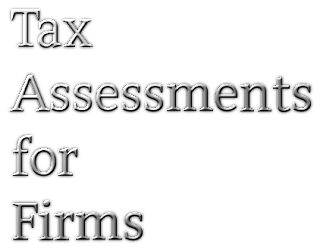Firm is an association of two or more than two persons, who came together to do a business and share profits thereof. Section 4 of the Partnership Act, 1932 defines Partnership as “relationship between persons who have agreed to share the profits of business carried on by all or any of them acting for all.”
The persons who have agreed to do business together are personally called “Partners” and collectively called a “Firm”. They are abiding by a deed called “Partnership Deed”. A Partnership Deed for partnership is same as Articles of Association, Trust Deed for companies and Trust respectively.
From Assessment Year 1993-94 the Partnership Firms are classified as;
1. Partnership Firms Assessed as Such (PFAS)
2. Partnership Firms Assessed as an Association of Person (PFAOP)
Scheme of Taxation of Firms;
1. The firm is taxed as a separate entity i.e. separate from its partners. No matter whether the firm is registered or not.
2. The definition of firm includes a Limited Liability Partnership and LLP is treated same as firm.
3. The share of partners in the income of the firm is exempted, while computing his individual income or share of partners in the firm is exempted in his hand.
4. Salary, Bonus, Commission or remuneration (by whatever name called) paid /payable to partners is allowed as deduction to the firm and same will be taxable in the hand of partners. These expenses are allowed as deduction subject to certain restriction under the Income Tax Act, 1961.
5. The interest to partners paid by firm is deductible subject to maximum rate of interest @12% pa. The amount is taxable in the hand of partners.
6. The firm is taxed @30.9% or 33.99% (subject to net income of firm is Rs. 1 Crore or exceeds Rs. 1 Crore).
CONDITIONS TO BE FULFILLED BY A FIRM TO BE ASSESSED AS SUCH (PFAS);
Section 184; of the Income Tax Act, 1961 governs the taxation and assessment of Firm. A firm has to satisfy these conditions to be assessed as a firm;
Section 184(1) (i): The Firm should be evidenced by an instrument called “Partnership Deed” and;
a. It should be in writing;
b. It should not be by conduct or oral;
c. The deed may contains following clauses; Name of the Firm, Place of Business, Nature of Business, Date of Commencemence of Business, Duration of Partnership(if any), Capital Clause, Profit Sharing Ratio, Remuneration payable to partners, Interest Payable to partners, Arbitration Clause( if any), drawing, power to operate bank account, method of calculation of profit and keeping of books of accounts, management of business, duties of partners, valuation of goodwill , increase of capital of partners, removal or inclusion of partners and some other clauses as agreed among the partners.
Note: Individual Share of partners must be specified in the Partnership Deed. The loss will be shared by partners according to their profit sharing ratios. But in case of a minor, how the loss of the firm will be shared among major partners should be clearly specified in the Deed.
A certified true copy of the Partnership Deed will be submitted with the first return of the Firm. The Deed would be signed by all partners (major partners). The deed may be submitted by Authorised Representative along with their Authorisation Letter.
In case of any change in the constitution of the firm or profit sharing ratio, remuneration/payment of interest to partners etc., a revised copy of the Deed should be submitted with the return.

CLAIMING DEDUCTION OF REMUNERATION PAID TO PARTNERS;
Section 40(b); claiming deduction of remuneration to partners;
1. Remuneration should be payable to working partners;
2. Remuneration must be authorised by Partnership deed;
3. Remuneration should not pertain to period prior to Partnership Deed and
4. Remuneration should not exceed permissible limited
Note: above conditions are applicable in all cases if remuneration paid in representative capacity also.
Working Partner; Section 40(b) explanation defines as;
a. An individual , who is a partner of the firm;
b. Such an individual is actively engaged in conducting the affairs of the business/profession of the firm.
Note: to claim deduction of remuneration, it should be sanctioned, approved or directed by Partnership Deed or Partnership Deed should provide power for payment of remuneration to working partners
Circular No. 739, dated March 25, 1996, CBDT lays down two conditions;
a. Eighter the amount payable to the partners should be specified or
b. The manner of quantifying the remuneration should be specified in the Partnership deed.
Sood Brij & Associates V CIT[2011] 203 Taxman 188 Delhi; it was decided that Quantum of remuneration or the manner of computation of quantum of remuneration should be stated in the Partnership Deed and should not be left undetermined , undecided or to be determined or decided on future date.
Maximum Amount as Permitted by Section 40(b); the amount actually deductible is;
a. The remuneration amount permitted by section 40(b) or
b. The amount of remuneration paid or payable to partners as debited to profit and loss account, whichever is lower.
|
Book Profit
|
Amount deductible under Section 40(b)
|
|
· If book profit is negative
|
Rs. 1,50,000
|
|
· In case of profit
-on first 3 lakhs of book profit
-on balance of book profit
|
Rs. 1,50,000 or 90% of book profit whichever is more
60% of book profit
|